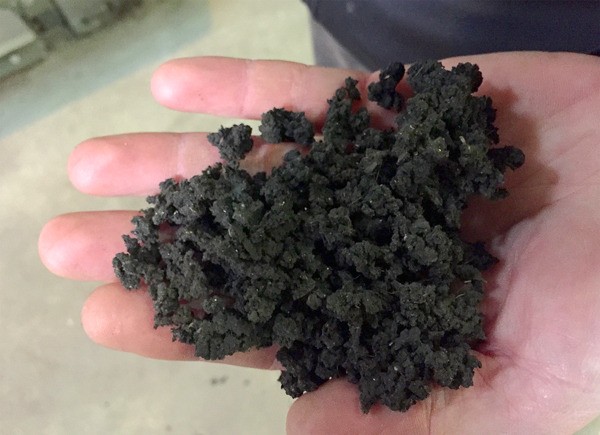Thanks to a state-of-the-art belt dryer, Oak Harbor’s sewage treatment facility will turn the solids flushed down the toilet into a product that’s safe enough to spread on Whidbey Island.
In fact, the resulting crunchy brown stuff may even be sold as a fertilizer, according to City Engineer Joe Stowell.
“There’s a market for it,” he said, “I know there is, once people get past the stigma.”
The City Council decided last week to purchase a $14.5-million dryer, which is the most expensive and technologically advanced option for dealing with biosolids.
Councilwoman Tara Hizon said the decision was a “no-brainer” for her.
“I can’t in good conscience vote for anything other than the best technology we can afford,” she said.
“I think we have a real obligation to our citizens decades from now.”

The other two options were disposal of the wet biosolids at a landfill and stabilizing with lime before trucking to Eastern Washington for disposal.
Stowell said sending the stuff to a landfill was not a long-term solution because of state regulations.
Stabilizing the biosolids with lime would create a substance that’s not environmentally safe enough to be spread on Whidbey Island, so it would have to be trucked to Eastern Washington. Stowell said the yearly trucking costs would be sizable and the truck traffic would impact Windjammer Park.
Councilman Joel Servatius pointed out that the up-front cost for the dryer may be more, but the longterm cost is basically the same for both options.
City staff and the contractors working on the project looked at four different manufacturers for dryers and chose Haarslav Industries, a multi-national manufacturing company.
Stowell explained that the drying process occurs within the large machine. A dewatered “cake” of biosolids is spread onto a large conveyer belt — much like a giant cake piping bag — and dried with 300-degree hot air, going from 18 percent to 90 percent solids.
The resulting “Class A biosolids,” he said, has the consistency — but not the flavor — of Cheetos and can safety be spread on farmers’ fields or gardens. In fact, it’s not actually poop, he claims, but dead bacteria that consumed the flushed waste.
“It’s high in nutrients, safe to handle and good to mix with other materials,” he said.
Councilman Rick Almberg sniffed a jar of dried biosolids at an earlier workshop and said it was odor-free — and looked like “marmot poop” — though Stowell said some smell would return if water was added.
The city will have to create a biosolids management plan for dealing with the product. One possibility, he said, would be to work with a landscaping company to mix the stuff with compost and sell it back to residents.


